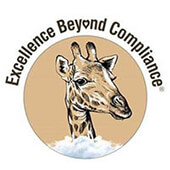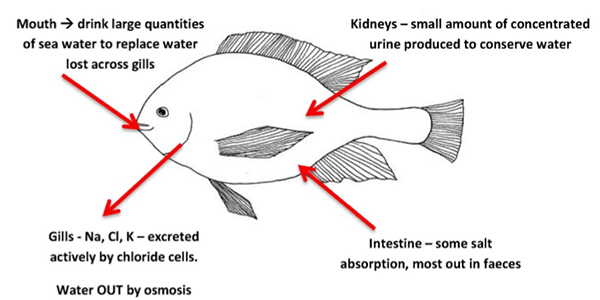Academy Contributors
Getting Better All the Time:
A Responsible Framework for Utilizing Third-party Reviews to Advance Animal Welfare and Provide Greater Transparency
 By James F. Gesualdi By James F. Gesualdi
To keep ahead, each one of us, no matter what our task, must search for new and better methods—for even that which we now do well must be done better tomorrow.
—James F. Bell
There is always a way forward. A better way. And a way to change the trajectory of circumstances, events, and factors like public perception and the public trust, which remain vital considerations to the zoological community. The way begins with us and how we view and act upon our ability to change ourselves, our organizations, the zoological community, and the use of external controls like the Animal Welfare Act (AWA) regulations and inspections, and accrediting association standards, guidelines, and other reviews.
Recently, the United States Department of Agriculture, Animal and Plant Health Inspection Service, Animal Care unit completed its listening sessions on the concept of using "third-party inspections," such as those associated with accreditation and certification, to factor into determining the frequency of agency inspections. The prospect of considering third-party or non-agency "inspections" is part of the agency's ongoing examination into the potential reallocation of agency resources to more effectively administer the AWA. The listening sessions, press releases, statements, and media coverage all suggest that there is great concern over supplanting agency inspections, and strong support for the agency's current inspection model. Other potential concerns relate to qualifications of the third-party reviewers. The comment period closed March 21, 2018. For more information on documents and comments, see regulations.gov/docket?D=APHIS-2017-0102.
Official federal agency inspections produce formal inspection reports generally available online and by request. This also establishes a record of compliance history, as well as a basis for enforcement action, if warranted. There is simply no substitute for such inspections.
As noted in Excellence Beyond Compliance, and in previous columns, the AWA is best viewed as a starting point rather than an ending point for animal welfare-related efforts. That starting point or baseline should remain (but can certainly be improved upon). With this in mind, voluntary and novel use of third-party "reviews" can provide a great service to all stakeholders concerned about the well-being of the animals in our care.
Given the effort and time invested in presenting and critiquing the concept, here are some preliminary ideas to make the most of the knowledge gained from this process to date, in order to continuously improve regulatory efforts and animal welfare using third-party "reviews" (but not as a substitute for agency inspections).
- Agency AWA inspections should continue (and be improved).
- Third-party "reviews" (though sometimes referred to as inspections in the context of accreditation and certification) should be recognized as important supplemental means of assessing and improving current conditions.
- Third-party reviews should be encouraged and voluntarily employed in addition to, but not a substitute for, agency inspections.
- It must be understood that any third-party reviewer(s) must be fully qualified for the task at hand, including possession of appropriate credentials, experience, and expertise.
- Following third-party reviews—including but not limited to those for accreditation and certification—focusing on improvements or incidents, the following information should be proactively and voluntarily disclosed:
- Identification of good practices worthy of consideration and potential adoption at other facilities.
- Commitments to undertake and implement improvements, e.g., animal welfare or other enhancements, perhaps in the form of an improvement or advancement plan.
Such use of third-party reviews would bolster but not replace agency inspections, positively reinforce use of voluntary third-party expertise, further disseminate good practices to enhance animal welfare, support and reinforce continuous improvement, and provide greater transparency and accountability for all involved. These are all things the public demands and values. Most importantly, such a responsible framework for greater use and disclosure relating to third-party reviews demonstrates how we live our commitment to the well-being of the animals entrusted to our care.
For more information on Excellence Beyond Compliance®, visit excellencebeyondcompliance.com.
© 2018 James F. Gesualdi, P.C. The opinions expressed herein are solely those of the author. This is not, nor should it be construed as, legal advice.
 Something Fishy Is Going On Something Fishy Is Going On
By Dr. Rob Jones, "The Aquarium Vet"
In my last article, we discussed osmoregulation in freshwater fish. Osmoregulation is the active regulation of the osmotic pressure of an organism's body fluids to maintain the homeostasis of that organism's body water.
This month, we look at marine fish. Remember that the internal environment of a fish is between 8 and 10 parts per thousand (ppt) salt (humans are 9 ppt, for comparison). Seawater is 35 ppt (although in some parts of the world it may be as high as 40 ppt). Marine fish are, therefore, in a solution that is higher in salt levels than their body—i.e. hyperosmotic (or hypertonic) to the fish. This means that they are constantly having water leave their body via the massive surface area of the gills. As such, there is a constant threat for them to become dehydrated or hypovolemic (a condition of decreased blood volume). So, how do marine fish combat this loss of water that is constantly migrating outward?
Marine fish avoid dehydration by drinking lots of seawater to replace the H2O leaving the gills. They drink up to 20 percent of their body weight every day (so the saying "drinks like a fish" only applies if you are a marine fish!). The problem is that they are ingesting lots of salts, particularly sodium (Na+), potassium (K+), and chloride (Cl-). Specialized cells called chloride cells are present in very high numbers in the gills of marine fish. They use a lot of energy to actively excrete these excess ions from the body.
Marine fish can absorb sodium (Na+) and chloride (Cl-) across the oesophageal wall (partly a passive and partly an active process), and both water and all the monovalent ions are absorbed across the intestinal wall. Between 60 and 80 percent of the water and monovalent ions that are drunk will be absorbed this way. Only about 20 percent of the divalent ions (calcium Ca2+ and magnesium Mg2+) are absorbed across the intestinal wall, and the remaining 80 percent pass through and out in the feces. In marine fish, the intestinal lining is a very important osmoregulatory organ.
The kidneys in marine fish work to conserve water, and so produce very small quantities of urine. In fact, only 5 to 10 percent of the water drunk each day is actually excreted as urine. The kidney, however, is involved in the excretion of excess divalent ions (of the only 20 percent absorbed from the gut), as well as retaining the monovalent ions. The urinary bladder also plays an important role in water absorption and active sodium reabsorption to help maintain osmotic balance. A marine teleost's daily urine rate is about 1 to 2 percent of its body weight (compare this to a possible 15 percent for freshwater fish).
The diagram below provides a summary of osmoregulation in a marine fish.

It is for the above reasons that reducing the salinity of seawater is beneficial in reducing osmotic stress in marine fish during quarantine or any other stressful period.
I look forward to seeing some of you at the Regional Aquatics Workshop Conference RAW 2018 at The Florida Aquarium in Tampa, May 14–18. The Aquarium Vet will have a booth, so please drop by and say "G'day!"
E-quarist™ Courses—Academy Subscriber Special!
The San Diego Zoo Global Academy is excited to share an additional Academy subscriber benefit regarding our collaboration with The Aquarium Vet: as an Academy subscriber, you are now entitled to a discount on the e-quarist™ courses. We are also happy to offer one of our free monthly webinars.
For more information about the SDZGA discount, or anything about the e-quarist™ course, including next month's free webinar, please contact katrina@theaquariumvet.com.
Visit the Aquarium Vet website at theaquariumvet.com.au. |